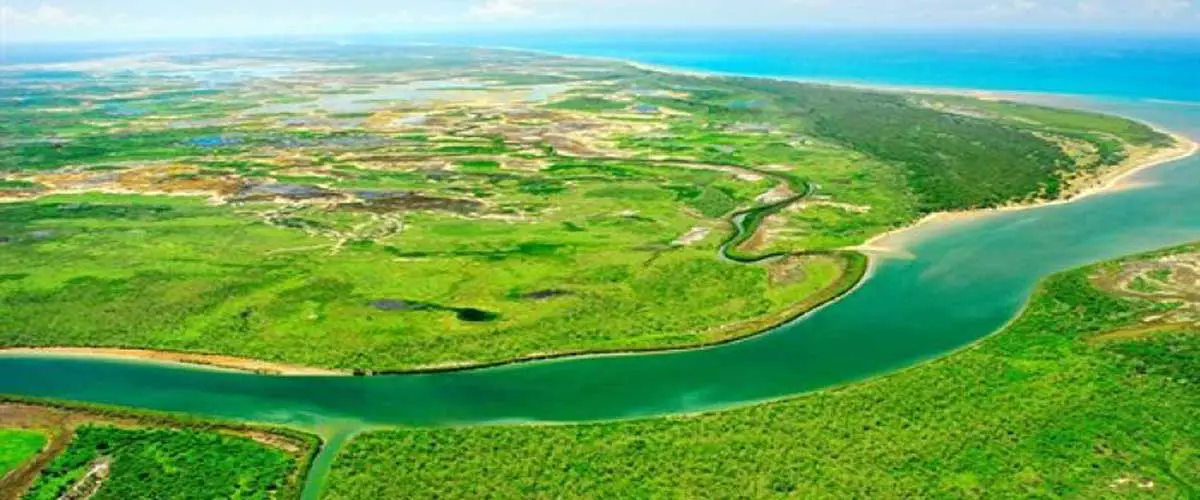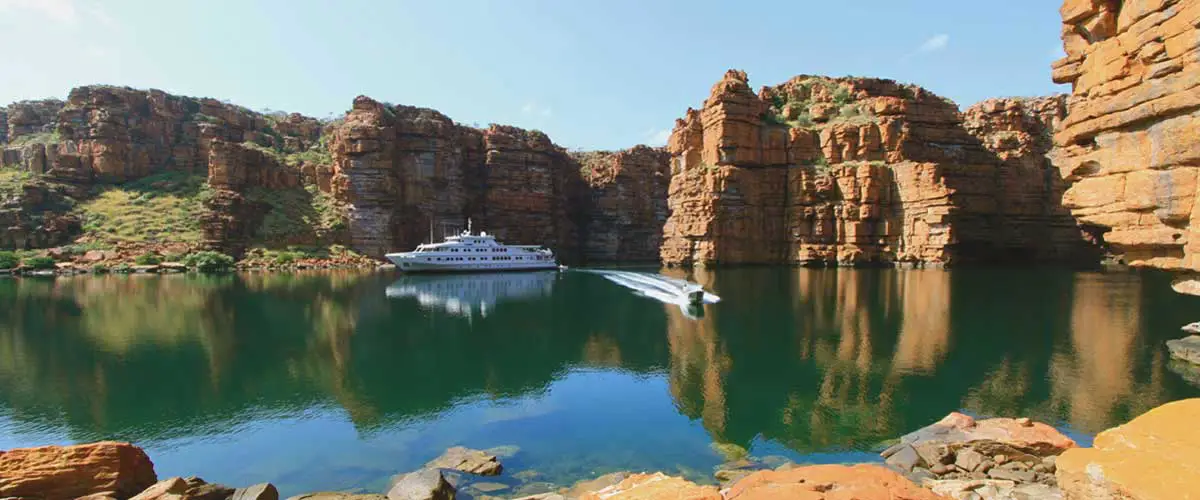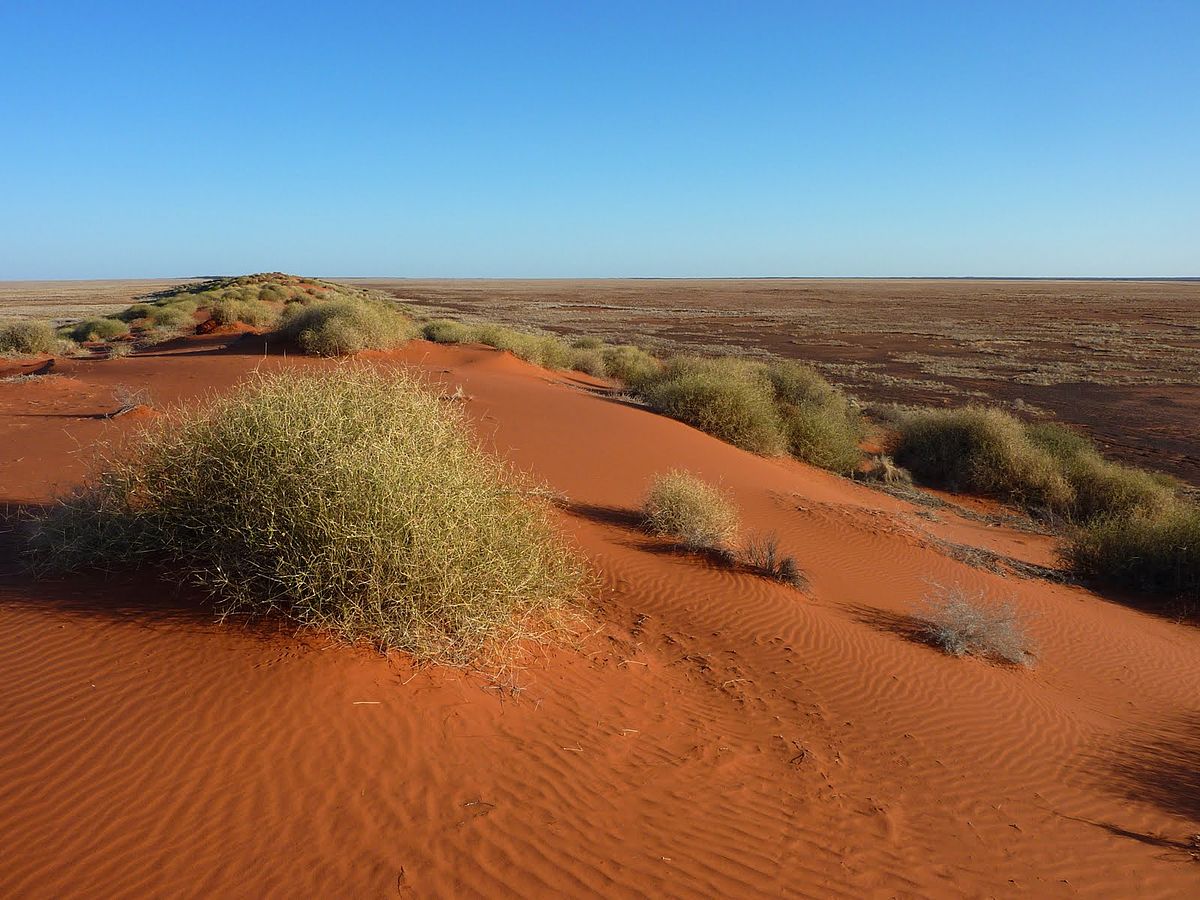
Landscapes and their distinctive landform features
Different types of landscapes
The term landscape is used to describe the visible features of an area of land, the landforms that are in it, and how these landforms characterise the geography of the particular area.
Natural landscapes are made up of a collection or group of landforms, like mountains, hills and plateaus or lakes, streams and rivers. Whilst some landscapes are extensive areas, others may be relatively small. There are many different types of landscapes, including:
- Coastal landscapes
- Riverine landscapes
- Desert landscapes
- Karst landscapes
- Mountain landscapes
Landforms have relationships with each other, meaning that they form distinctive groupings in different landscapes.
Coastal landscapes
A coastal landscape is an environment where water is the main geomorphic agent on the surrounding area and works to create or shape a range of landform features. Some of these geomorphic processes are erosional, some depositional. Therefore, different sections of coastlines may be distinguished as individual coastal landscapes. One coastal landscape will be distinguishable from neighbouring coastal landscapes by the prevailing landform characteristics that dominate that section of coastline.
For example, water, in the form of waves may gently lap at the coastline or they may crash violently. In other areas, water may meet the coastline from rivers, streams or delta systems to also create or shape unique coastal landscapes.

Gulf Coast, NT
Gulf Coast, NT. Click to expand.
The Gulf Coast is the part of the Northern Territory that borders the Gulf of Carpentaria. Over 20 rivers drain into the gulf, which result in river deltas. These deltas are the result of depositional processes. The rivers transport large amounts of sediment downstream towards the coast and as the current slows at the river’s mouth, sediment is deposited on the coastline, which creates and continues to shape deltas. The delta system along the Gulf Coast has resulted in mangrove-lined shores.

Noosa Heads, QLD
Noosa Heads, QLD. Click to expand.
Noosa Heads is on the northern part of Queensland’s Sunshine Coast. When looking at the satellite imagery of the coastline, it can be observed that there are multiple coastal landscapes in this small geographic area. On the eastern side of Noosa Heads – near Noosa National Park – the coastal landscape is dominated by large headlands, rock formations and cliffs. To the north-west of Noosa Heads, another landscape is evident, consisting of sand bars and islands created by deposition as the Noosa River meets the ocean.

Kimberley Coast, WA
Kimberley Coast, WA. Click to expand.
The region known as The Kimberley spans about 1200 kilometres and is marked by striking cliffs, the remains of what appear to be an ancient mountain range. Off the coast, the waters are characterised by reefs teeming with marine life. These reefs largely protect the coastline from the erosional processes of waves, resulting in calm waters set against magnificent cliff faces.

Twelve Apostles, Great Ocean Road, VIC
Twelve Apostles, Great Ocean Road, VIC. Click to expand.
The Twelve Apostles is a collection of limestone stacks (landforms) by the Great Ocean Road in Victoria. These landforms were formed by erosion. The Southern Ocean is characterised by harsh and extreme weather conditions. Powerful waves and strong winds gradually eroded the soft limestone to first form caves in the cliffs. These would later become arches, which in turn collapsed, leaving standing rock stacks up to 50 metres high.
Riverine landscapes
A riverine landscape is formed from the natural movement of a water system like a river or stream. These riverine landscapes include the ecosystems in and around the area of the river or rivers and are suitable for agricultural uses as the land is rich and fertile.
Murray-Darling Basin
The Murray-Darling Basin is a large area of south-eastern Australia. Water flows through a system of rivers and lakes, the most notable of these being the two main rivers: the Murray River and the Darling River.
Darling River at Menindee, NSW
The Darling River begins in Southern Queensland. It flows into the Murray River at the border of New South Wales and Victoria, where it continues through to the sea just south-east of Adelaide.
The basin features a host of riverine landscapes. There are 16 internationally significant wetlands, which provides habitats for 35 endangered species and 98 different species of water birds.
Where the Darling and Murray rivers converge
The basin also is agriculturally significant, with over 40% of Australia's agricultural produce coming from it. The basin produces:
- 100% of Australia's rice
- 80% of Australia's grapes
- 28% of Australia's dairy products
Farms along the Murray River near Mildura
Due to the large system of rivers, lakes and streams, the basin is home to more than 2.2 million people, including 40 different First Nations people. It also receives high volumes of tourists, earning about $8 billion each year.
River flooding
Many riverine landscapes can also be subject to flooding. Rivers often wind through relatively flat lands and heavy rainfall can result in the banks of the rivers flooding. The map to the right shows the Brisbane River under normal flowing conditions (left) and after the river flooded after some heavy rainfall in 2010-11.
Desert landscapes
Desert landscapes, which can also known as arid landscapes, are characterised by low rainfall, a lack of available water sources and high evaporation. Due to these factors, arid landscapes support a much smaller amount and range of plant and animal life.
As a result of these characteristics, many of Earth’s deserts showcase a range of arid landscapes.

Sahara Desert, North Africa
Sahara Desert, North Africa. Click to expand.
The Sahara Desert is the largest desert in the world, covering most of northern Africa and spanning more than 10 countries. From east to west, it measures approximately 4,800km, and from north to south it measures between 1,200km to 1,950km. The desert covers 8,600,000 square kilometres.

Simpson Desert, South Australia | Northern Territory
Simpson Desert, South Australia | Northern Territory. Click to expand.
The Simpson Desert covers 143,000 square kilometres in central Australia. It covers the south-eastern corner of the NT, the south-western corner of Queensland and the north of South Australia.

Mojave Desert, Nevada | California
Mojave Desert, Nevada | California. Click to expand.
The Mohave Desert is primarily located in south-eastern California and southern Nevada. The desert is a rain-shadow desert. This means that the Sierra Nevada mountain range (north of Los Angeles and evident on the map) actually blocks much of the rain clouds that come in from the Pacific Ocean from passing over the desert. This results in very little rainfall in the desert.

Antarctic desert, Antarctica
Antarctic desert, Antarctica. Click to expand.
Antarctica is a desert; it does not rain or snow a lot there and when it does snow, the snow doesn't melt. Instead it builds up to make large, thick sheets of ice, called ice sheets. This process occurs over many years.
Karst landscapes
Karst landscapes are formed when slightly acidic water eats away at – or erodes – easily dissolvable bedrock. Bedrock is the rock that lies below the surface of the land, like limestone. The flow of this acidic water can create unique features such as caves, stalactites, springs and sinkholes. As a result, Karst landscapes can be extremely unstable as the bedrock is always being further eroded and changed by the flow of the water. Once too much of the rock has been eroded away beneath the Earth’s surface, sections of land on the surface can collapse.
For example, sinkholes have been known to range from a couple of metres deep to over one kilometre in depth, swallowing up everything on the surface including whole houses, sections of roads, and cars.
Shilin Forest, China
Shilin Forest is a set of limestone formations that is found in Shilin, China. It features a set of limestone formations that cover about 500 square kilometres. The formations are caused by the weathering of the limestone, and are believed to be over 270 million years old.
Sinkholes
Sinkholes can occur naturally and due to human causes.
If the bedrock below the surface is made up of materials that dissolve in water (e.g. limestone) then sinkholes can occur. Over a period of hundreds or thousands of years, natural water currents beneath the Earth's surface may work to erode or dissolve this bedrock and forge chasms. Sometimes the top of the chasm grows toward the surface of the earth and the surface layer gets thinner and thinner. Eventually, it becomes too weak to support what is above it, and it collapses. Sometimes intense rains or floods can also work to rapidly erode the bedrock too.
At other times, human-made infrastructure like storm water drains and sewers can burst suddenly or leak over long periods of time, and this can lead to sinkholes too. In fact, this occurred in Brisbane in June, 2021, which can be seen in the video below. You can also view the video the right for more footage of sinkholes.
Fire truck trapped after sinkhole opens up beneath it in Brisbane | 7NEWS
Mountain landscapes
Mountain landscapes are formed by the convergence of tectonic plates. As two or more tectonic plates converge against one another, the movement and pressure cause the land to be pushed up in a vertical direction to form mountains. This process happens over time. Mountain landscapes are distinct as the mountains rise high above surrounding features. However, mountain landscapes can still be diverse as they can appear as a single mountain, as mountain ranges, or form ridges.
Closing task
Locate three unique Australian landscapes using ArcGIS Online. Once you have located each landscape, briefly research it to identify what landforms are characteristic of the location. In ArcGIS Online, create a Map note layer for each landscape and write a short paragraph on how the landscape’s landforms are created or shaped.